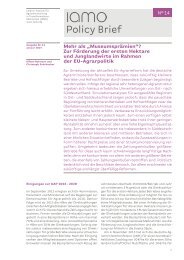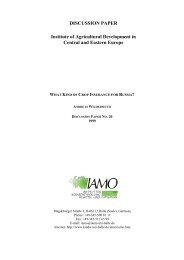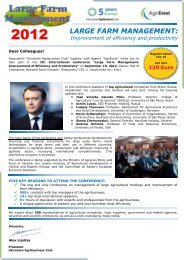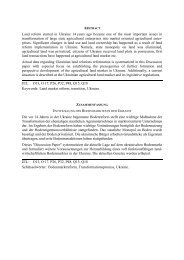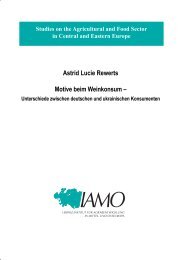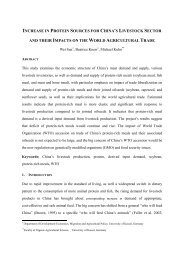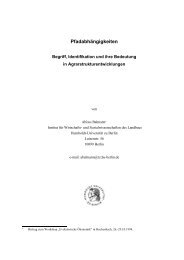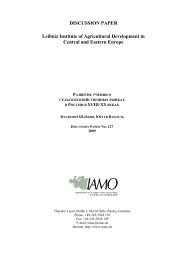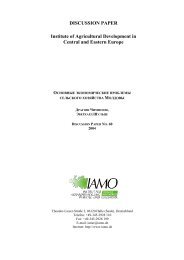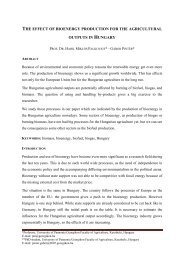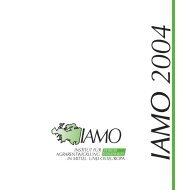downloaded
downloaded
downloaded
You also want an ePaper? Increase the reach of your titles
YUMPU automatically turns print PDFs into web optimized ePapers that Google loves.
VI<br />
Executive summary<br />
targeted and, because of this, tend to consolidate structures instead of promoting<br />
structural change. Generally, all farm subsidies should be brought in line with EU<br />
measures as early as possible, which means that if direct farm support is desired,<br />
Croatia should opt for direct payments which are decoupled as much as possible.<br />
Direct payments have proven useful for securing certain income levels, for<br />
example in Slovenia. But compensation payments which aim at tiding over the<br />
adjustment pressures should be designed according to a clearly-defined transitional<br />
period; i.e. such payments should not be made permanent since their distortion<br />
potential would increase and lead to a slowdown of structural change.<br />
Exit schemes for farmers. Only about 10% of the farms want to exit farming<br />
within the next five years, while 45% of the farms intend either to retain their<br />
present state of development or continue as hobby farmers. However, for successful<br />
structural change, farm exit is crucial as a driver of farm development. Incentives<br />
are needed to convince farmers to give up farming and release their land to those<br />
who are willing to expand. Therefore, (semi-)subsistence and hobby farms<br />
should be excluded from regular farm subsidy programmes. Positive incentives<br />
for farm exit could be set, for example by an early retirement scheme as offered<br />
within the EU, or other monetary or social benefits that are offered under the<br />
condition of giving up farming.<br />
Food processing sector. Generally, the question applies, and could not be finally<br />
answered in this study, whether the lack of competitiveness at farm level can be<br />
compensated somewhat at processing level. It is likely, however, that this assumption<br />
is true to some degree, as with increasing depth of processing Croatia’s food<br />
sector becomes more competitive on EU markets. However, this issue should be<br />
looked into more closely in order to further accelerate structural change in the<br />
agricultural sector.<br />
Agricultural extension service. The manpower and background of the extension<br />
service in Croatia is sub-optimal and needs to be strengthened substantially in<br />
order to come to terms with the challenge of structural change in the Croatian farm<br />
sector. As of 2007, 215 extension workers (thereof 198 agricultural specialists)<br />
within the Croatian Agricultural Extension Institute (CAEI, founded in 1997)<br />
potentially service 448,000 thousand family farms. This means every extension<br />
worker is responsible for more than 2,000 farms. Obviously, the overwhelming<br />
task ahead requires many more qualified extension workers. These ought not to<br />
be solely experts in agronomy, but also agricultural economists and persons<br />
experienced in regional rural development. Furthermore, to advise interested<br />
farmers in the correct application procedures, the development of business plans,<br />
and the assessment of associated risks, these workers will need professional



